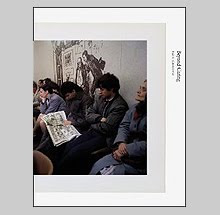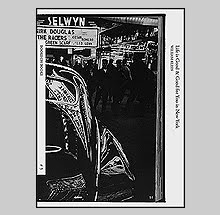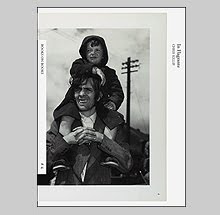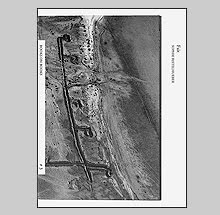Menschen Erleiden Geschichte by Leonard McCombe
Who the hell is Leonard McCombe? Did I miss a meeting? Oh, I now know the basics -- that he was a Life magazine photographer and that he once made a photograph of a cowboy that inspired the Marlboro Man advertisements, and I know he is a Manx from the Isle of Man, but my recent discovery of his book published in Germany called Menschen Erleiden Geschichte (Humans Suffering History) demands that I know more about this man who created this incredible document of World War II. At the risk of ruffling the delicate feathers of idolatry I consider this work of such high quality that in my opinion it easily deserves an equal seat alongside that of Robert Capa 'the world's greatest war photographer.'
Published in 1948 by Atlantis Verlag, Menschen Erleiden Geschichte is subtitled The Face of Europe from the
McCombe's camera pays as much attention to the events as to the inner emotional state of the subjects. Much of what is striking about this work is McCombe's ability to work and yet go unnoticed at times when the subject seems to be experiencing deep inner reflection.
McCombe starts his journey in Normandy France in 1944 with what looks like the French troops pursuing retreating German forces. The first picture shows a young soldier through the window of the vehicle as he blankly stares ahead as if foreseeing the events he is about to witness. Within the next few photographs the troops come under fire, crawl through ditches, duck for cover behind burning tanks, and navigate their way past fallen bodies. The town is in rubble, the population is displaced and McCombe turns his attention away from the fighting and concentrates on the costs. He doesn't seem to be using a lens any longer than a 50 mm so most of the description is up close and personal, giving the viewer a sense of tension from danger.
Within the next chapter, German prisoners of war are rounded up and processed in the wounded are attended to. It is within the sequence that McCombe momentarily turns his attention to a field surgeon as he operates in a makeshift hospital room while outside the dead are being recorded and buried.
The next major sequence brings McCombe into
After VE Day, McCombe made his way into
The last chapter of Menschen Erleiden Geschichte as the book's subtitle suggests starts with us flying over
As with many books that protest war, this one probably has its fair share of heavy-handed and cliché captioning (luckily for me I don't understand German to have that be a detractor) but the photography is exceptional. It is not just McCombe's humanism at work but the impression that he is everywhere at once and filling up his frames with a complexity that is rarely seen while a photographer is under such duress.
The book is beautifully printed in gravure and the design makes use of many exciting cross-page spreads and sequences. Small sections of
McCombe has a few other books; Navajo Means People, The Cowboy, and You Are My Love and although each feature some fine work, this book is the most complete and shining example of his talent. W. Eugene Smith in an essay on photojournalism mentions Henri Cartier-Bresson and Leonard McCombe as two examples of 35mm "natural light" photographers, so obviously his work was well respected amongst his peers. With that in mind, I ask again, who the hell is Leonard McCombe? And why is it so hard to find any substantial information about this remarkable photographer?
A special thank you to Ed Grazda for the scan of the dustjacket.















